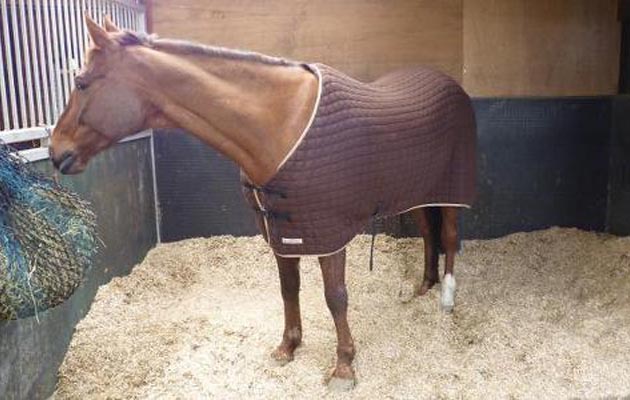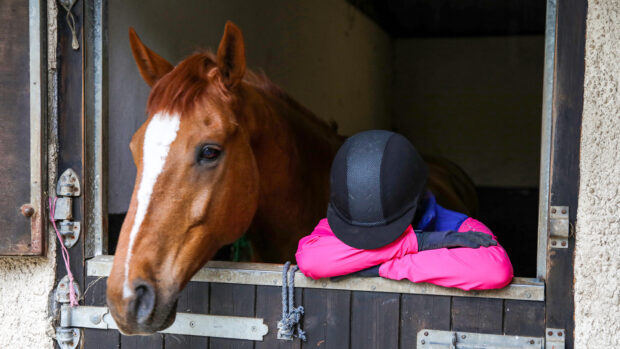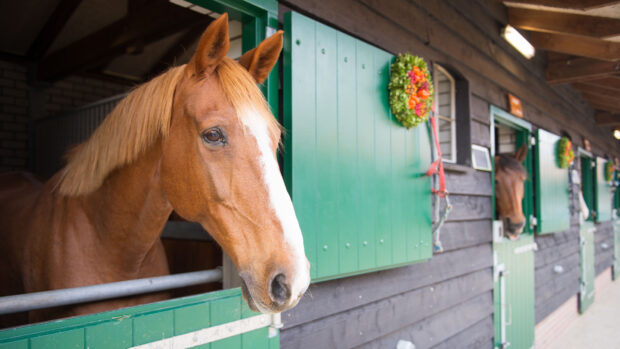With the arrival of autumn, and winter on the horizon, the majority of horses will be spending more time in their stables, which can lead to problems such as RAO, capped hocks and thrush. However, in certain cases, these conditions can be avoided by simply changing your type of horse bedding.
Capped hocks and elbows
If a horse has insufficient bedding in his stable, he may suffer from capped hocks and elbows, caused by bruising over the point of the hock or elbow joint, both of which contain lubricating joint fluid.
In serious cases, the joints can become very swollen and sore, and the horse may also be lame. A combination of rubber matting and a covering of additional bedding such as straw or paper usually helps to alleviate the problem.
Colic
Horses who eat their bedding through hunger or boredom may become prone to colic. A common cause of bedding-related colic is a horse eating dry bedding, which then expands in the stomach causing discomfort, inflammation and possibly a blockage. Choosing a non-palatable alternative such as cardboard or shavings should deter the horse from nibbling his bed.
Getting cast
Horses who enjoy rolling may become cast. This can cause injury and swelling to joints and limbs, as well as potential back damage. High banks and a thick layer of light bedding such as straw will go some way to alleviate injury if your horse does become cast.
RAO
Recurrent airway obstruction (RAO), formerly known as chronic obstructive pulmonary disease (COPD), is a common respiratory disease similar to asthma in humans. In most cases, RAO is caused by hypersensitivity to mould spores in the horse’s environment. It is a management issue. The horse’s respiratory tract responds to allergy-inducing particles with a narrowing of the airways and reduced breathing capacity. Many horses with RAO are kept outdoors, while stabled patients are commonly given rubber flooring and/or dust-extracted bedding to reduce spores.
Urticaria
Some forms of the skin irritation urticaria can be caused by an allergy to bedding or mould, which results in the appearance of rashes or bumps on the horse’s body. It is usually a temporary condition, alleviated when the offending bedding is removed and the stable cleaned and disinfected to eradicate mould spores.
Slipping
Shod horses with smooth stable floors and a minimal amount of bedding may be prone to slipping in the stable, resulting in musculoskeletal trauma or strain. Rubber matting is an ideal solution to provide grip for the horse when getting up or lying down, especially if a covering of additional bedding is provided on top.
Stiffness and injury
Some horses with stiff joints, or those with limited mobility through injury, may suit certain types of bedding. For example, rubber matting may not provide enough comfort for the horse who is immobilised for long periods, while some types of bedding can become tangled around limbs or make dressings or wounds messy and unhygienic. Light, clean types of bedding, such as chopped cardboard, are good choices for equine patients.
Thrush
Horses suffering from conditions of the foot, such as thrush, need clean, dry stable bedding in order for the foot to dry out and recover. With this in mind, bedding such as hemp or wood fibre, both of which drain down to the base leaving a dry top layer, may be good options.



